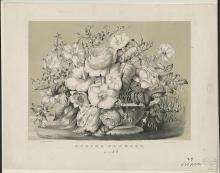Starting with this model lesson for Kindergarten, EmergingAmerica.org launches a new feature. Periodically, we will post exemplary inquiry-based lessons using primary sources from the Library of Congress. Contact us with feedback or your own drafts or suggestions for lesson ideas." - Rich Cairn, Director, Library of Congress Teaching with Primary Sources Program of the Collaborative for Educational Services
What Do Trains Do? Kindergarten Lesson Plan
Kwame Webster, Collaborative for Educational Services





